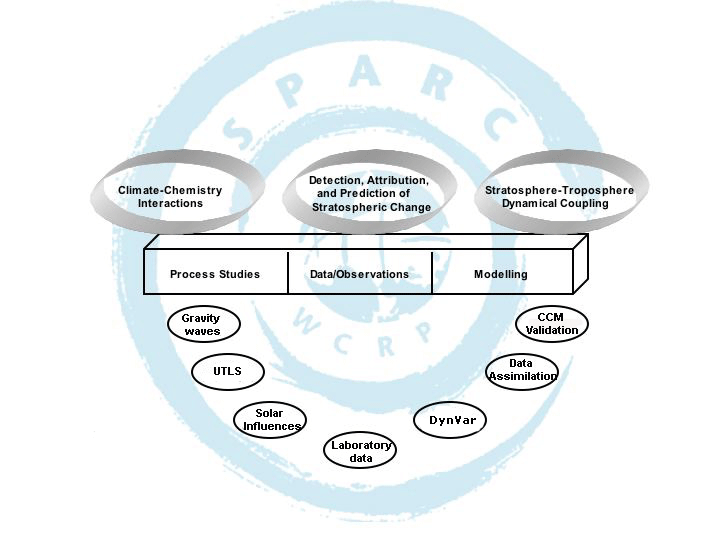
SPARC
Stratospheric Processes And their Role in Climate
A core project of the World Climate Research Programme
Publications (Newsletters / Reports)

The structure of adopted SPARC activities is shown in the figure. The activities of SPARC, a project of WCRP, are aligned into thematic areas shown as shaded ovals. The basic information for SPARC research and activities are in the form of observation, process studies, and modelling, which are integral to all the three themes; they are shown as boxes supporting the themes and connecting to the specific tasks that are shown as ovals below. The specific tasks are the heart of SPARC and it is through these tasks that SPARC activities are carried out and the SPARC community is involved. This is meant to be a "living" figure in which, for example, new ovals will be added for additional SPARC activities when they are established.
Stratospheric processes play a significant role in the earth's climate. The absorption of solar radiation in the stratosphere by ozone modulates the solar forcing of climate. The concentrations of some stratospheric gases, principally ozone, carbon dioxide and water vapour, determine significant radiative forcing terms, and there is two-way interaction between stratospheric and tropospheric dynamics.
Recognising the importance of these processes for the climate system, the World Climate Research Programme (WCRP) set up, in 1992, a research project to study Stratospheric Processes and their Role in Climate (SPARC). The principal objective of this project is to help the stratospheric research community focus on the issues of particular interest to climate. The Scientific Steering Group (SSG) of the SPARC project work towards this with the help of the SPARC office and the SPARC initiatives (working groups), through the SPARC newsletter, SPARC meetings and the preparation of SPARC reports, as well as the promotion of needed field measurement programs.
The objectives of SPARC are described in detail in the SPARC Implementation Plan (2009).
The SPARC Data Center has been opened in June 1999 and is archiving the SPARC relevant data to facilitate data exchanges between participating scientists.


